
Bill’s last season in 1969 with the tragic end
The outcome of the 1968 season with the unfortunate loss of the 250ccworld title was the biggest disappointment in the life of the 26-year-old so far. In the previous year he had more bad luck than some racing driver never in his entire career. In the first half of the season, Ivy had only crossed the finish line four times at 10 Grand Prix. He had won three times, and once he purposely crossed the finish line in second place. This was at the TT when he was not supposed to win the 125’s due to a stable order from Yamaha. Originally, Bill even stopped on the last lap and asked a marshal about the intermediate result in the race. After that, driving to the finish line hardly more than at walking pace to let Phil Read win.
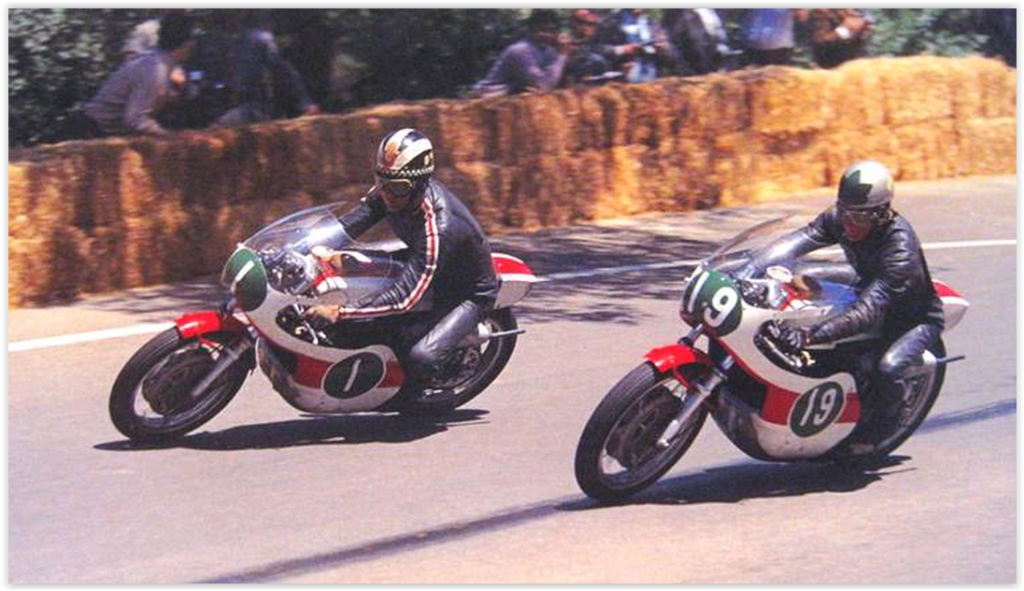
The stolen title
It was precisely his teammate who later fooled him and in turn disregarded the stable order when it came to the 250 cc world championship title. From Brno, Read only drove for himself and ultimately won the title with a tie with Ivy at the green table. Bill Ivy was so disappointed that he even announced his retirement from motorcycle racing and wanted to switch to Formula 2.

The short time on Jawa and the last races of his life
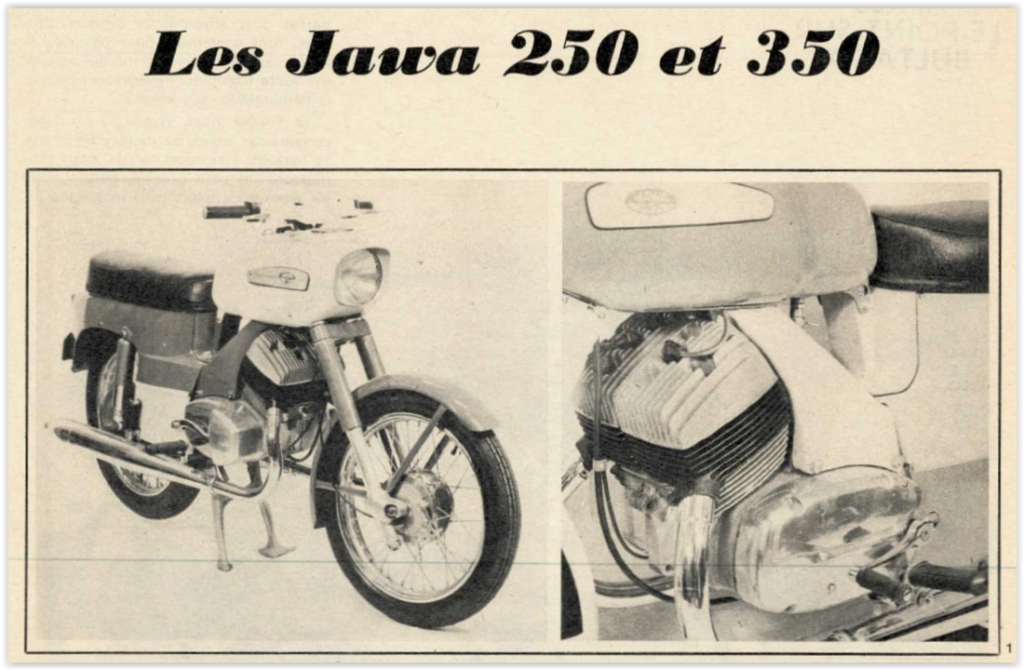
The Jawa offer
It was an offer from the Czechoslovakian company Jawa, which still exists today, which Ivy wanted to send into the 350cc World Championship with their new V4 two-stroke racer. Ultimately, financial reasons are also likely to have been a decisive factor in Bill’s decision to sign. One can also say that despite a 125cc world championship title in 1967 and two runner-up world championship titles (125cc and 250cc) from the previous year, he still had an open bill in motorbike GP.
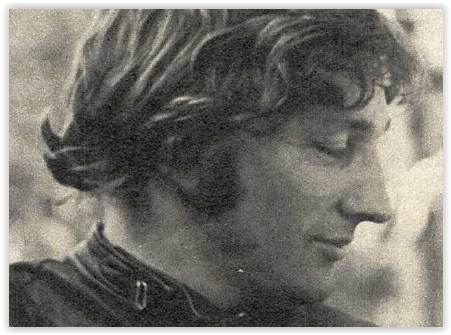
Heating up something with the 350 Jawa, World Champ Giacomo Agostini and dominating MV Agusta manufacturer, was a very promising option. The manufacturer from what is now the Czech Republic, just like the Japanese, on the other hand wanted to boost sales of its motorcycles in the West with sporting success.
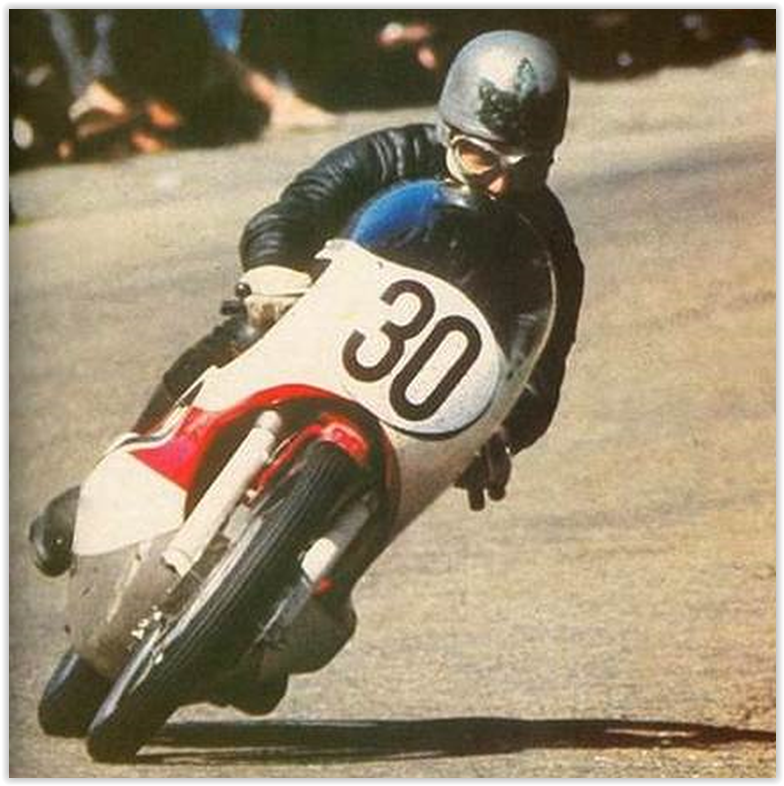
Factory teams from 1969
Despite the withdrawal of the three largest Japanese plants, a total of 16 plants took part in the motorcycle world championship. After Honda and Suzuki left the GP scene already in 1968, Yamaha was no longer there. But as early as the 1973 season, the company was to return to GP sport with the 3 tuning forks in the logo. And just a year later, Suzuki also followed suit. In the 1960s there were still a lot of brands that unfortunately disappeared from the scene in the next 1 to 2 decades.

With the exception of Jamathi, Linto, Münch-URS and Paton, the following list was about manufacturers whose models were also found in traffic roads. The 4 exceptions were prototypes developed purely for racing and were only intended for use on circuits. At this time there were already commercially available racing machines, which is why privately used Yamahas continued to compete instead of the factory bikes.

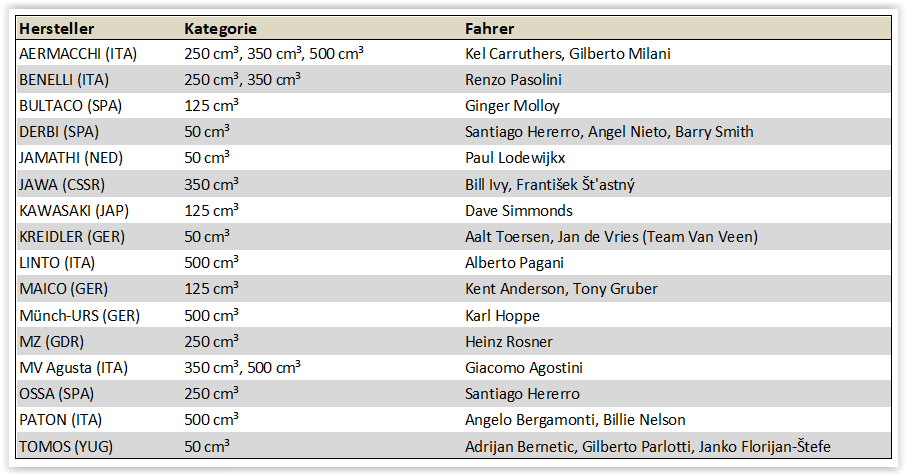
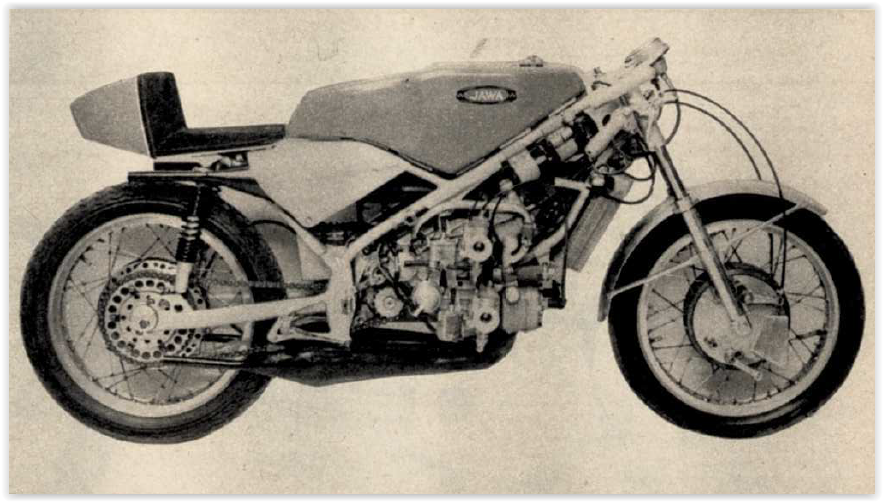
Radical changes to the regulations for the 1969 season
For the manufacturers, the technical restrictions in terms of the number of cylinders and gearbox were particularly significant. Gone were the days of the 6-cylinder 250cc engines and 50cc two-cylinder racers with 14 gears. Hans Georg Anscheidt’s 50 cc V2 Suzuki from 1968 had such a transmission. Due to an extremely narrow usable speed range in the power output of their engines, this was also necessary. The 125cc five-cylinder Honda, with which Luigi Taveri was still world champion in 1966, another example of technical crazyness in those years.
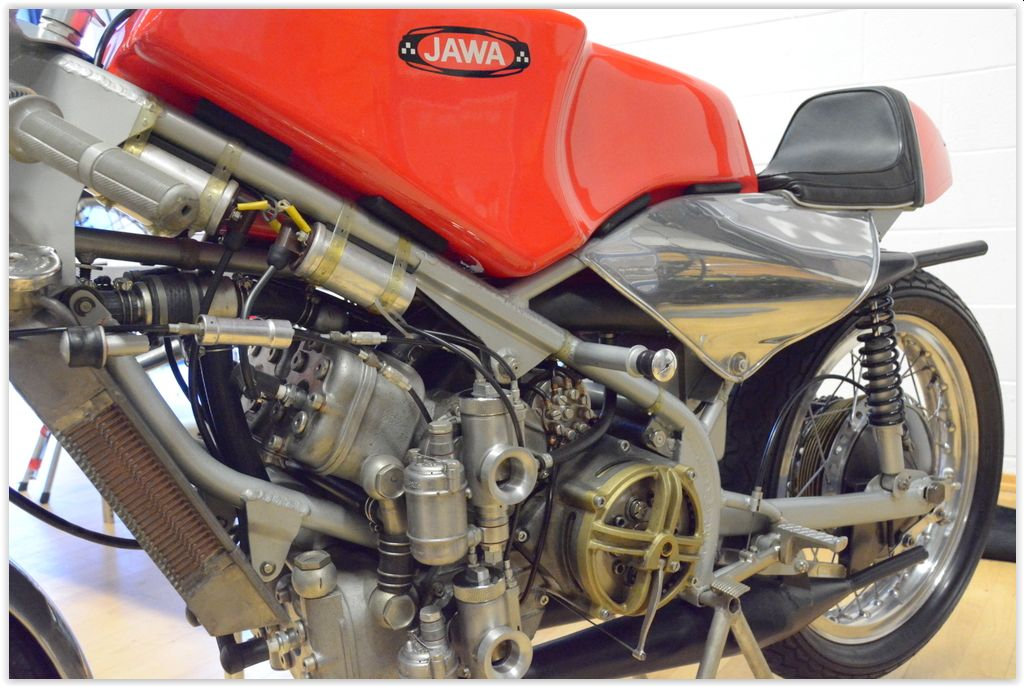
Beginning of a new era
After a first phase (1949-1958), in which the big European factories had dominated the scene, the second with the appearance and predominance of Japanese manufacturers (1959-1968) had now become history. From 1969 a new era began. After the withdrawal of the Japanese, the technical limitations and the new method of distributing points should encourage small European manufacturers to enter GP racing. The most important change, also from the driver’s point of view, concerned the mode according to which the championship points at the world championship were awarded from now on. Instead of just the first 6, the first 10 of each GP race received World Championship points according to the following scale:

Zero points at the start of the season
Bill Ivy raced the Jawa-4 for the first time at the Spanish GP. In contrast to the years before, this race no longer took place on the street circuit of Montjuic Park near Barcelona. In 1966 and 1967 Bill was named the winner in the 125 cc race there. This time it went to Jarama on a route that was new to all pilots. The circuit north-east of Spain’s capital Madrid still exists today. However, the Circuito del Jarama was removed from the GP calendar in 1993.

Scandal-ridden season opener
The premiere was in 1969 and Giacomo Agostini, the big favorite, won the 350cc class. Second was Australian Kel Carruthers on Aermacchi, ahead of Giuseppe Visenzi (ITA / Yamaha) and Ginger Molloy (NZL / Bultaco). Bill Ivy dropped out at this race and had to accept a zero point result. He only competed in the 350s this season, because Jawa had focused entirely on this class for this year. Before the race, the Benelli team protested that MV Agusta had exclusively rented the track on the Friday before the race. As a result, Agostini dominated strongly in the 500cc race and won over Angelo Bergamonti (ITA / Paton) and Ginger Molloy (NZL / Bultaco).
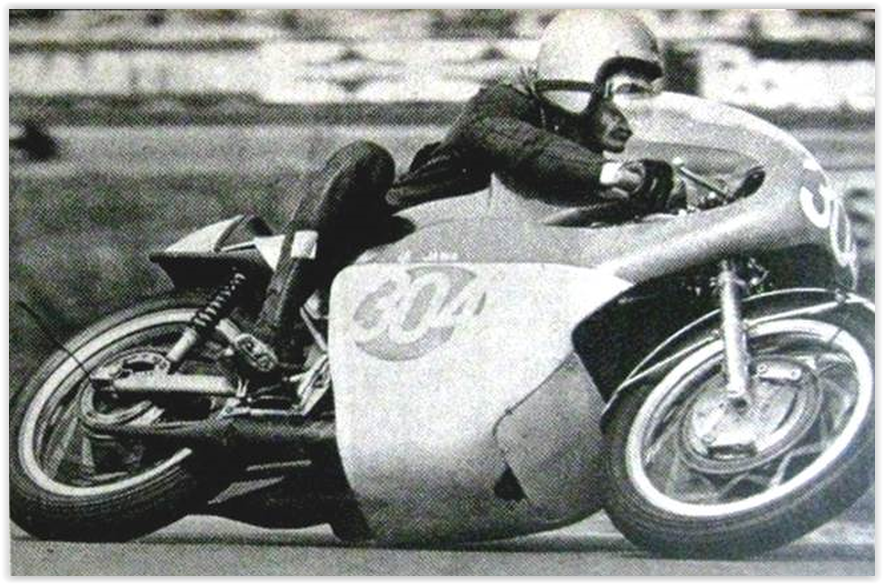
First respectable success at the GP of West Germany
At the Hockenheimring Ivy had already experienced some ups and above all lows in the 3 years before. Most of the time, Yamaha’s fragile technology failed to do its job, and once he was innocently involved in a mass fall. But in 1969 “Little Bill” was lucky, and he was able to prove for the first time what he was capable of with a reasonably competitive bike in the 350 cm³ class. The little Englishman put Giacomo Agostini under a lot of pressure throughout the race. In the end, the big favorite won and to his right, Ivy climbed onto the podium in a sensational second. His experienced Czechoslovak Jawa team-mate Frantisek “Franta” Stasny came in third ahead of Jack Findlay (AUS) and Giuseppe Visenzi (ITA), both on Yamaha.
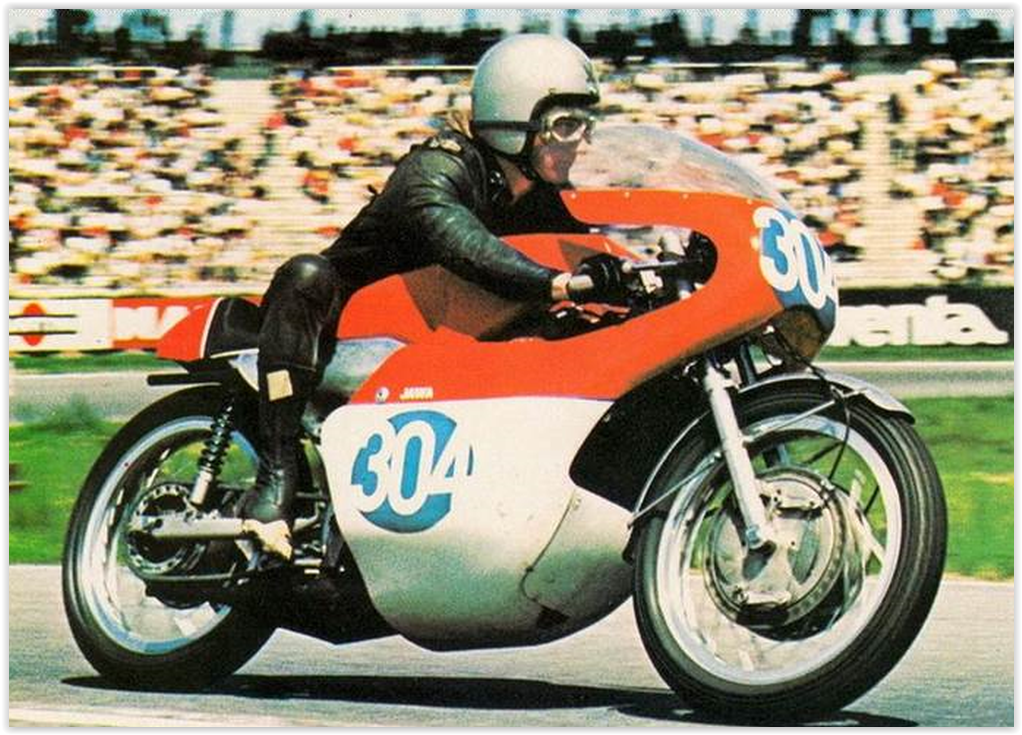
Motorbike GP racing break in Le Mans and at the TT
Ivy was absent from the Le Mans GP in France after the 350 cc class took not place here, as it was in Spa-Francorchamps. He was also not at the start of the TT, as he has been competing in Formula 2 since 1969. In the first race on April 7th in Thruxton, after qualifying, he was second behind Jochen Rindt. In the first semifinals, he was fourth before he had to retire on lap 34 in the final with an engine failure. As so often, Bill Ivy was only able to slow down the technology this time.
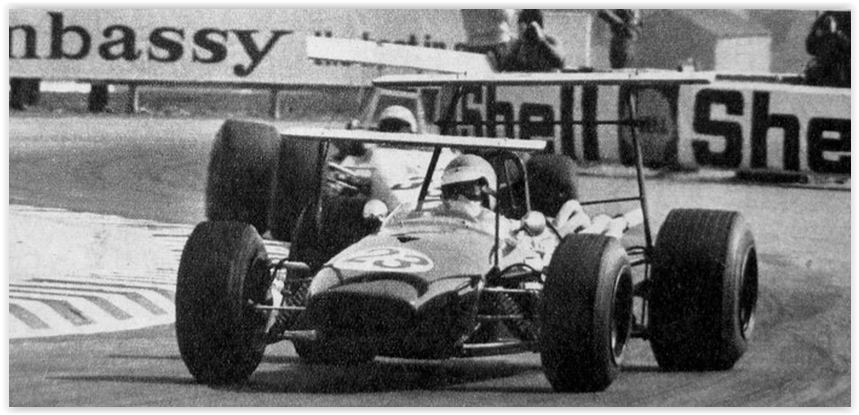
Serious accident and changeable progression of the Formula 2 career
At the ADAC Eifel race on the notorious Nürburgring Nordschleife, Bill came off the track at the “Schwalbenschwanz” sector and had a serious accident. At the Grand Prix of Limburg in Zolder (Belgium), which is not part of the championship, Ivy celebrated his first finish arrival six weeks later in 5th place. Then he competed in the Rhine Cup race at the Hockenheimring. Here he even led the race at the beginning before retiring due to a technical defect. After not starting a race in Monza on June 22nd, the race continued on 2 wheels, the Assen GP was waiting.
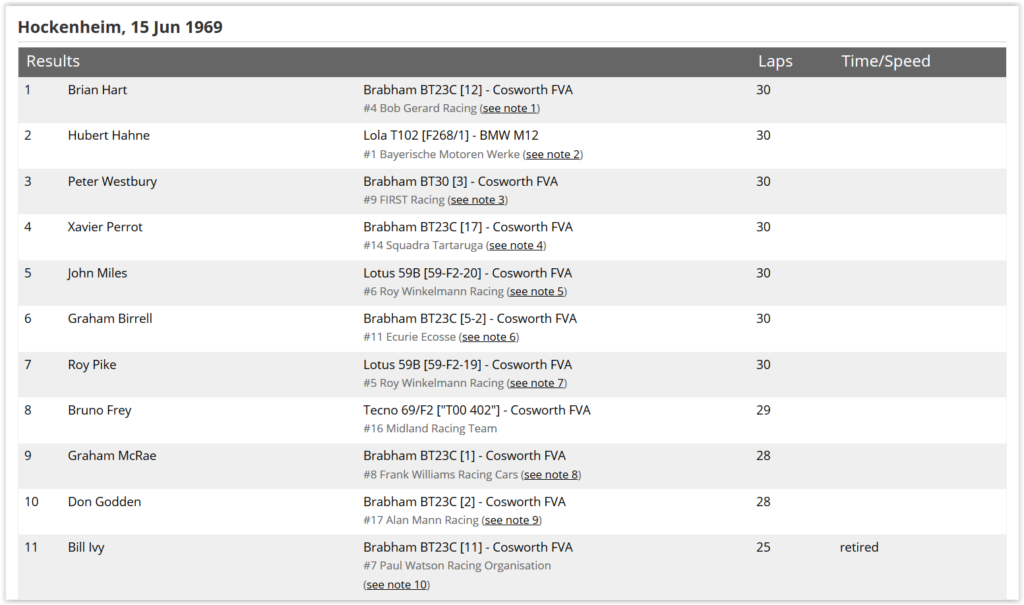
Dramatic course of a fantastic 350cc GP in the Netherlands
In a fantastic duel, Bill Ivy succeeded in following Agostini in this race and even took the lead several times. But once again the technology disturbed the race of the little fighter. Because his Jawa V4 suddenly only ran on three of 4 cylinders, which caused Ivy to fall behind. But the Englishman did not give up and even managed to save second place behind Agostini and in front of the Italian Silvio Grassetti. With two finishings 2 second places in the 4th race. It was simply sensational what Bill Ivy had shown with the two-stroke Jawa against the most successful racing driver in history. It went on to the Sachsenring. Last year Ivy had reached 2nd place in the 125cc race and even won the 250s race.
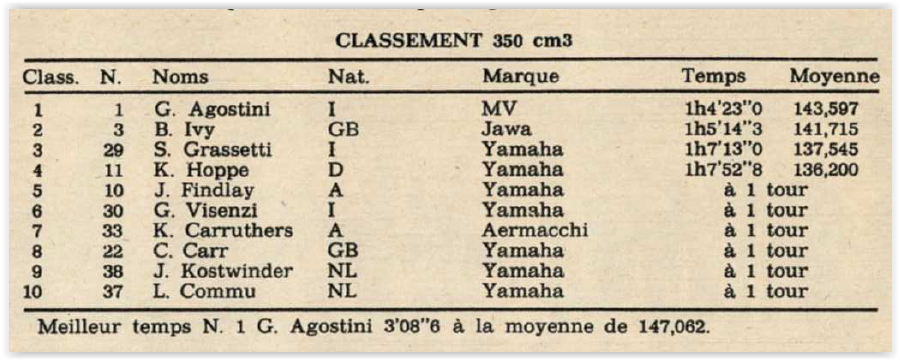
The GDR GP on the Sachsenring
As usual, there was a rush of visitors to the Sachsenring that was unparalleled anywhere in the world. In what was then the German (non-) Democratic Republic, the stars from the GP scene had always had a special attraction. The enthusiasm on the track and in the whole area can still be felt today, but the 1969 event went down in history as a black weekend in racing.
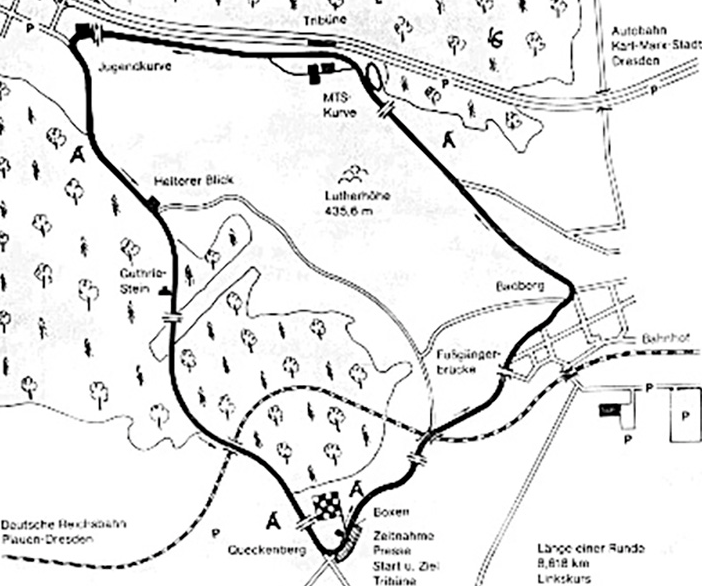
Ivy’s tragic death before the Sachsenring GP
On July 12th during training for the GDR GP, the 26-year-old Bill Ivy tragically died on the section in front of the Badberg curve. It was found later that a connecting rod bearing defect on his 350 cm³ V4 Jawa had led to a so-called “piston stuck”. It is possible that Bill had adjusted his helmet at the wrong moment and therefore had not put his hand on the clutch in time to be able to react to the blocking motor. Ivy was thrown against the pillar of a fence in a fall and died shortly afterwards of severe head and thoracic injuries.
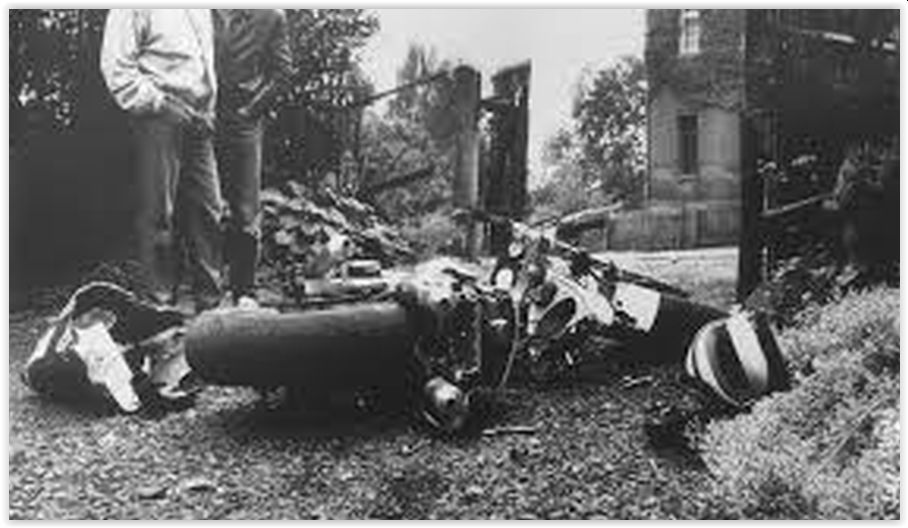
Quote from Bill Ivy
“Little Bill” is supposed to have said once
“I have to live life this way because it looks like this life won’t last long”.

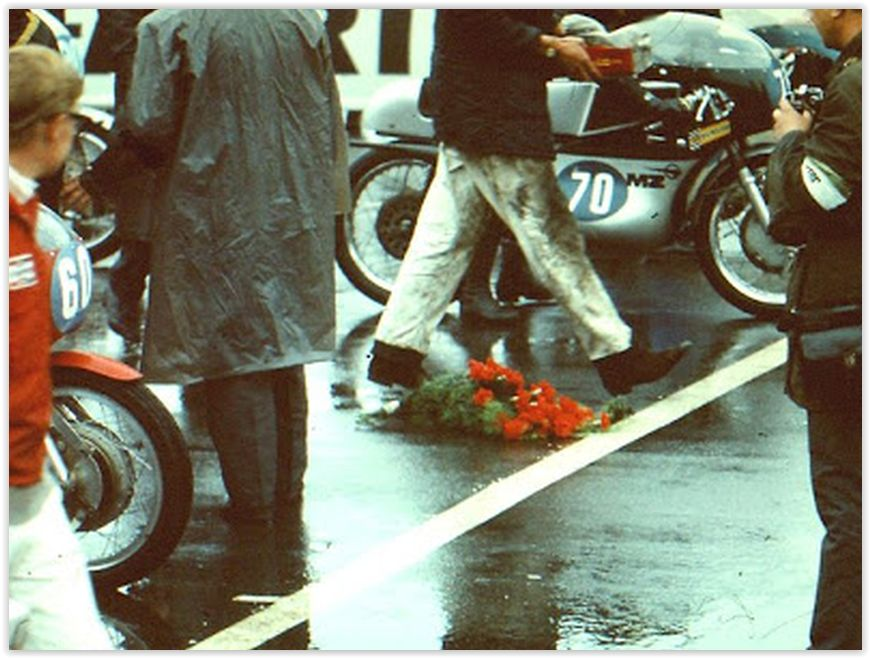
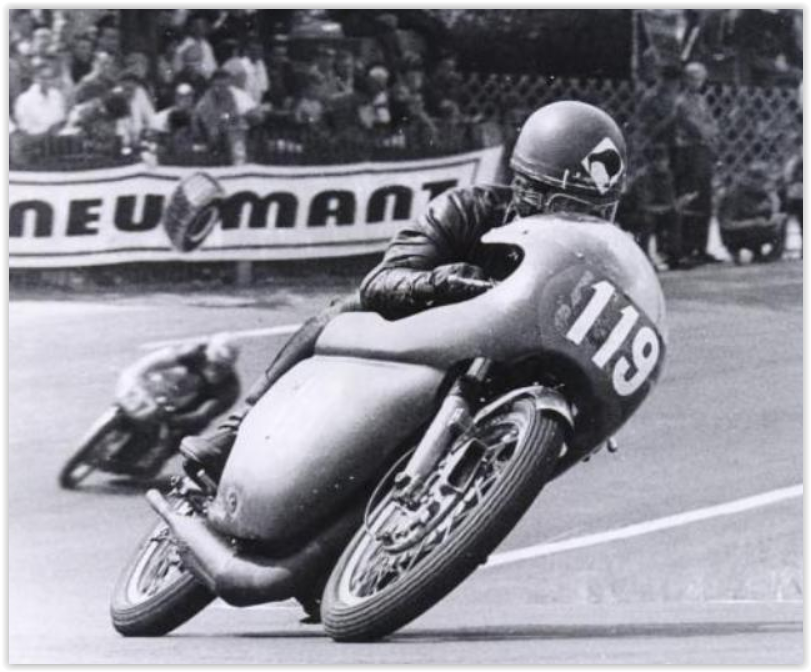
Bill Ivy’s successes in brief
The little big Englishman won a total of 95 races from 1963 to 1968. He scored 21 victories in 46 starts at Grand Prix races, which also included 19 podium finishes. Bill Ivy drove the fastest lap in a GP 28 times, i.e. more than every second run in which he participated. If “Little Bill” did not finish at a World Championship run, it was mostly due to the fragile technology. Far too often the tiny man with the big fighter’s heart had unspeakable bad luck with the material. Under these circumstances it was particularly tragic that his fatal fall on the Sachsenring was also the result of a technical failure on his 350ccV4 Jawa. At the final race in Opatija, Silvio Grassetti achieved the first win of the season in the 350cc class on a Jawa. Frantisek Stasny was third in ex-Yugoslavia at this GP in today’s Croatia. The Italian Grassetti, who was hired to replace Ivy, had already achieved two podium finishes at the Czechoslovakian GP in Brno and at the Nations GP in Monza (P2).

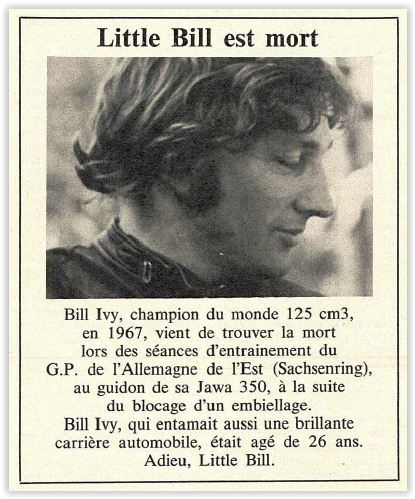
350cc Riders world championship 1969
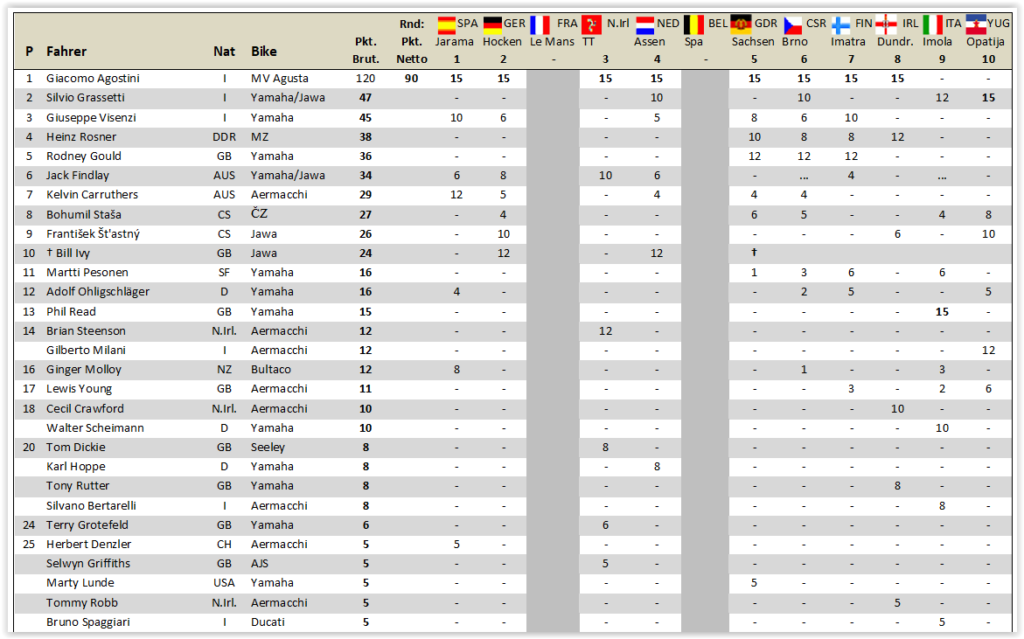
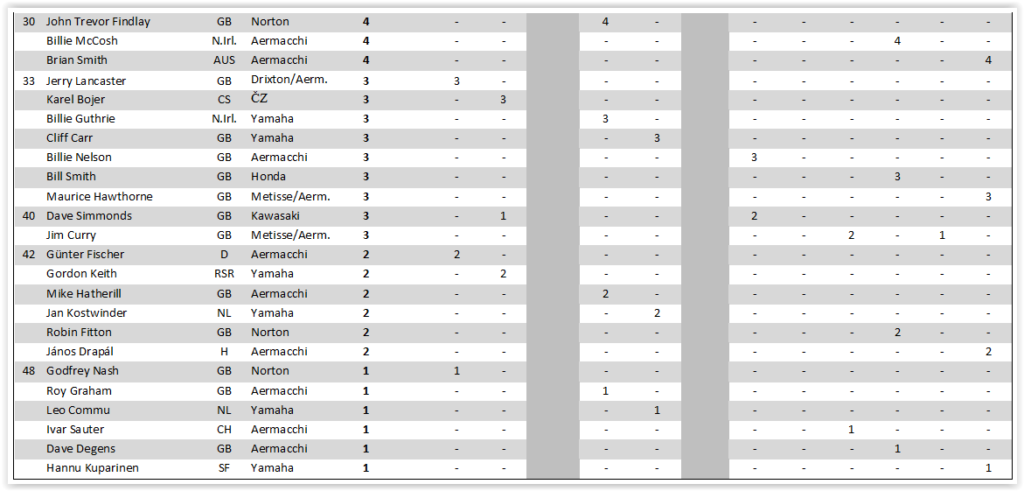
350cc manufacturer championship 1969
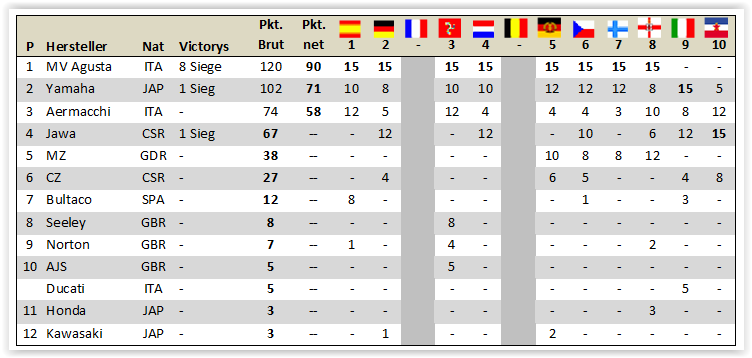

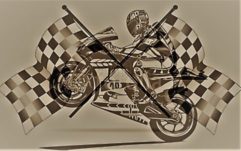
I grew up with bill before he was famous, all the usual young boy pranks
Thank you so much for your comment.
Maybe you want to tell us a little more about this time and in this case please send it to motoracers.eu@yahoo.com.
Merry Christmas and a happy new year!
The Motoracers